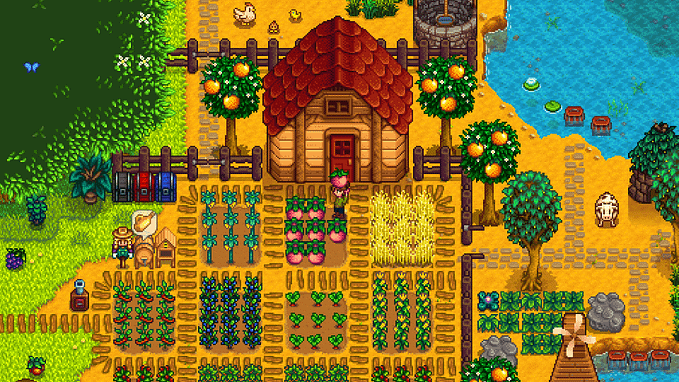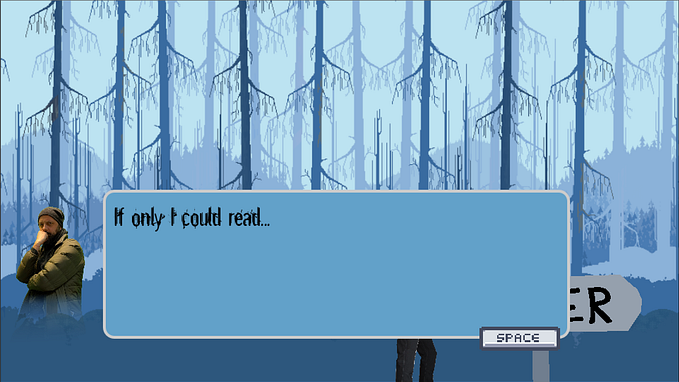Deciphering game narrative jobs
When people think about game narrative, their minds tend to stick with the big moments that moved them — be it the death of Aerith in Final Fantasy VII (Square-Enix, 1997), the ending of Ghost of Tsushima (Sucker Punch, 2020) or the final moments of Monument Valley (ustwo, 2014.)

This bias makes the task of discussing game narrative more complicated than it should be, as narrative is more than scriptwriting. It encompasses so many different elements, and the jobs that go with them, that it becomes tedious to create an exhaustive list of what goes into a game’s narrative.
Every week, I get new requests from people who say they want to become narrative designers. And I’m able to assert with just a few questions that they think narrative design is game writing.
Mythbusting the craft of game narrative is essential as more and more people head towards our industry with an inaccurate vision of what it entails as a way to make a living.
To do so, let’s start by taking a quick look at the primary positions that work together to make a game’s narrative great — or at least good enough.
Game narrative jobs
Narrative Director
Working closely with the creative director, who is responsible for the global vision, the narrative director keeps an eye on the global script coherence while translating the former’s vision into deliverables for the various teams to work on. Together with their lead(s) they guide their associates on the right path with their high-level vision.
Narrative directors are a bit less known than creative ones — we can cite Sandra Duval (Dishonored 2, Deathloop), Stéphane Beauverger (Vampyr, Tell Me Why) or Motomu Toriyama (Final Fantasy 7 Remake).
In companies dedicated to narrative experiences, the Creative director themselves can come from a narrative background, and thus put the story first in the development process. People like Amy Hennig (Jax III, Uncharted), Cory Barlog (God of War II, God of War 2018) and Tim Schafer (Grim Fandango, Psychonauts) are good examples of this.
Lead Narrative Designer
People in lead positions usually spice up their hard skills with some management. A lead would typically allocate the various narrative design tasks amongst the various members of their team and assist them in the process.
More often than not, part of the requested tasks fall to them as well.
Narrative Designer
Core to the issue at hand, the narrative designer position requires a good understanding of the development process, as most design positions do. Their job is to ensure the tone and consistency of the game’s content.
Narrative designers typically maintain the narrative documentation, design the cinematics and other story-related rewards, plan the high-level scripts of the game before communicating them with the appropriate teams so that everything goes in the direction provided by their higher-ups.
Technical Narrative Designer
While narrative design appeared rather recently as a discipline, technical narrative design has gained traction in the last year or so, with companies such as Ubisoft, Splash Damage and even Remedy recruiting people for this position.
It entails a focus on designing narrative systems and implementing the content in-engine rather than its management. Their job is to ensure proper delivery of the content by any means necessary.

Lead Writer
Same as the lead narrative designer, the lead writer splits work and attributes tasks, all while working with the lead narrative designer to realize the vision set forth by the directors.
Lead writers typically have to go through the editing process with the content provided by their team to ensure the best possible writing quality.
Game Writer
Game writers are responsible for the content that players read (or hear). The quality of the dialogues, collectibles and cinematics is part of their routine.
They can participate in the definition of the world and characters and have to ensure tone is consistent throughout their content.
Other Related Positions
Together with these various positions, many other jobs have an impact on the narrative. Let’s not forget the various producers, sound designers, voice actors, gameplay programmers, dev testers, animators, and more that give life to our favourite IPs.

Overlapping Positions
Most narrative designers writing about their craft are trying to underline the difference between their job and a writer’s, sometimes while being both. It is rather frequent to see someone going from game writer to narrative designer, working on projects and gathering new skills. The other way around is a bit more rare, though, as writing requires another type of dedication.
Smaller companies scarcely have the means to hire a full-time narrative designer AND a full-time writer, which leads to hiring people able to do a bit of both and push them in the multitasking direction. Thus, a single person is often in charge of doing both, leading to further confusion concerning the limits of the narrative designer role.
With a lot of positions requiring people to be both the writer and the designer, the line between the two has become blurrier than ever. And while both work on providing the player with a narrative experience, the former works on delivering the immediate experience when the latter strategizes the long-term content.
To provide a concrete example, the narrative designer would be the one to say: “when the character is shot in the leg, I need them to shout something” and the writer to answer: “what about ‘they got me!’?” And the both of them would then be interacting to determine the best option(s).
Here, the narrative designer might tell the writer: “the character is shot in the leg, I need a more specific line, as we’ll have other lines for shots in the arm.” The final line might ressemble something like: “dang, my leg!”
Narrative Roles in Different Types of Games
AA/AAA Narrative Games
With big-budget video games still being released every year, narrative jobs won’t disappear anytime soon, even though they are bound to evolve with the arrival of computer-generated content.
Due to the ambitions carried by these projects, the developpers have to be more focused on their expertise, as there is a lot of ground to cover in order to create these experiences.
Games need not be the most ambitious story ever to require both narrative designers and game writers alike. Tutorials are a good examples of a moment that is not necessarily very narrative but requires skillful craft to be delivered properly.
Narrative designers on these projects can even dictate how NPCs act when the player is not interacting with them, designing complex dialogue systems or even working with quest designers to tie complex storylines together.
On the other hand, game writers provide a plethora of different characters with rich backgrounds or create the story of a remote village in the mountains.

Mobile Games
Mobile games are no different from the rest of the industry with their narrative needs: companies like King, Supercell and Rovio have their own narrative designers onsite.
Similar to traditional companies, mobile narrative designers maintain documentation about the game, work with its structure and ensure the content is properly delivered. They also work with the rest of their teams to continously add new live content to keep players playing.
Rather than stick with the same games their concurrents were doing, these companies decided to associate their games with rich universes they were able to expand into profitable IPs thanks to the work provided by their narrative designers. The best example might be Rovio’s Angry Birds, which spread itself across more than 15 games, several movies and a TV show.
In such cases, narrative designers hold a position essential to the continuity of the IP, ensuring things said in one piece of media don’t go against pre-existing content — or find solutions to justify why it does.
Narrative-dry Games
Many companies working on games they deem not narrative don’t feel the need to hire narrative designers. This is a mistake, partly attributable to the lack of understanding of the job, but also of narrative as a whole.
Games without narrative are fairly rare and mostly fall under the hypercasual, abstract or arcade umbrellas. As such, a game designer’s input is often enough as far as any narrative components are concerned.
However, since narrative design can encompass tasks such as voice direction, UX writing and environmental storytelling, it is likely that more and more companies will hire people with the right skillset in the years to come.
The role of a writer in such cases might be fairly restrictive, where text is scarce. However, the narrative design might help with the overall aesthetics of such games, and participate in the naming of cosmetic items or player-to-player interaction.

Finding the Way
Joining the game industry is a tough endeavour and it’s easy to lose sight of what’s important on the way. Luckily, more people are ready to help than not, especially in the narrative community, which is growing as we speak.
As always, I feel the need to be honest considering the state of the job market, though: design positions barely represent 10% of the industry job offers, with narrative positions being, 10% of those. This makes for a a mere 1% of jobs in our industry being narrative-focused, and the number of aspiring narrative workers is exploding.
However, the recent success of games like The Last of Us: Part II (Sony, 2020), Animal Crossing: New Horizons (Nintendo, 2020) and Hades (Supergiant, 2018) revealed the appetite players can have for games with strong narrative and parasocial relationships, enhanced by the ongoing pandemic.
Game narrative is an ever-evolving topic and I hope to see our industry reach maturity in the coming years. As more and more people are joining in, especially for marginalized backgrounds, our field is getting richer by the minute, and before long we’ll see whole new libraries of stories that we weren’t provided with growing up.





